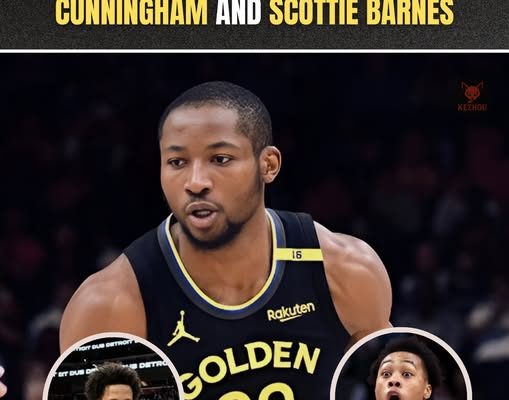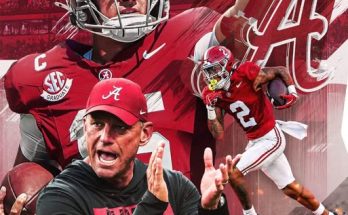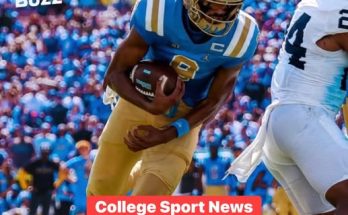Jonathan Kuminga believes he deserves a contract comparable to those signed by Cade Cunningham and Scottie Barnes—a bold and controversial stance that has captured headlines and ignited debates across the NBA landscape. At 22 years old, Kuminga has positioned himself at a crossroads: he sees himself among the elite of the 2021 draft class, yet his body of work so far remains a subject of contention. Reportedly, “he apparently thinks he’s at the Cade Cunningham–Scottie Barnes level, where he should get that type of contract,” a sentiment described by one insider as “really a quandary. I think it’s bad for the Warriors and bad for him.” (SI
Cunningham and Barnes, both standout performers from that same draft class, have already secured massive rookie-scale extensions—five years and approximately $224 million each (). In contrast, Kuminga finds himself caught in a high-stakes negotiation with the Golden State Warriors: either a team-friendly two-year, $45 million deal (with a team option for the second year), or a modest one-year qualifying offer of roughly $7.9–$8 million
Kuminga’s perspective may be rooted in confidence—he has shown flashes of dynamic scoring, high-flying athleticism, and a tantalizing blend of upside and tools. Indeed, he has every right to believe in his potential, especially given how the rest of the 2021 class has flourished. Yet his current resume—a role player oscillating between starter and bench contributor—doesn’t quite stack up yet to the All-Star status earned by Cunningham and Barnes
Cunningham, the number one pick in 2021, has evolved into a bonafide franchise centerpiece for Detroit. In 2024–25, he averaged 26.1 points, 6.1 rebounds, and 9.1 assists, earning his first All-Star selection and a place on the All-NBA Third Team . His playmaking has elevated the Pistons and lifted expectations. Meanwhile, Barnes, the fourth pick, quickly captured the Rookie of the Year award and became a pivotal, versatile force in Toronto—his all-around skill set making him a foundational piece
By comparison, Kuminga’s regular season stats—career averages of roughly 12.5 points, 4 rebounds, and 1.8 assists—are far from unimpressive, but don’t reflect the package offered by Cunningham (22.1 points, 5.4 rebounds, 7.4 assists) or Barnes (17.2 points, 7.5 rebounds, 5 assists) Even per 36 minutes, Kuminga’s production (about 22.6 points, 6.8 rebounds, 3.3 assists) trails behind Cunningham (26.9 points, 6.2 rebounds, 9.4 assists) and Barnes (21.1 points, 8.5 rebounds, 6.4 assists) (
Beyond raw numbers, NBA analysts point out that what separates players like Cunningham and Barnes is more than scoring—it’s their impact and versatility. Stan Van Gundy, now an analyst, praises Cunningham’s elevated leadership and playmaking, and highlights Barnes’ ability to pass and contribute in multiple ways. He contrasted that with Kuminga’s more one-dimensional impact, noting Kuminga lacks the all-around impact, like passing and rebounding, to fit in at their level—yet
Adding to the friction is the Warriors’ unique team dynamics. Since entering the league, Kuminga has been part of two title, consistent-contender teams. Warriors have always had established stars like Stephen Curry, Draymond Green, and recently Kevin Durant and Klay Thompson. His role has been defined by energy scoring and effort rather than offensive orchestration Coach Steve Kerr even remarked that Kuminga wasn’t suited for a role with reduced ball usage when Curry and Jimmy Butler occupied high-usage roles—an acknowledgment both of Kuminga’s high-energy execution and his struggle to adapt as a secondary option (
All this context frames the contract impasse: Kuminga and his camp reportedly seeking roughly $30 million per year, or a multi-year jump /like* the $150 million over 5 years that Hawks’ Jalen Johnson got, which Kuminga’s side said they’d accept if offered—but such a deal was never on the table (SI, ESPN.com). Warriors, meanwhile, reportedly valued him at $17–$25 million annually based on front-office polling, with the average estimate of around $20.4 million per year for a fair contract .
Some evaluators even liken Kuminga more realistically to Jaden McDaniels of Minnesota—another talented role wing—not quite in the elite tier, but close, with perhaps more impact if he hits his stride . This is reinforced by commentary from former NBA guard Ron Harper, who bluntly shot down Kuminga’s self-comparison, tweeting simply, “Well no” ).
Moreover, the risk-reward structure highlights the tenuous nature of Kuminga’s bet on himself. If he opts for the qualifying offer—roughly $7.9 million—he’d gain unfettered agency to bet on his own future, but the financial risk is sizable: injury or underperformance could diminish his leverage. A rival exec described the situation as potentially disastrous for Golden State—if Kuminga takes that low amount for one year, the Warriors lose flexibility: they can’t easily trade him, and he’d become an unrestricted free agent with veto power .
Yet, this scenario underscores his mindset: Kuminga doesn’t want to be viewed as a mere trade asset—he wants a deal signaling that he’s a building block, with a role and control, not a pawn (. His camp reportedly explored sign-and-trade options with Sacramento and Phoenix, seeking a starting role, longer-term deal with player options, and around $82–$90 million guaranteed—options the Warriors found unacceptable .
The impasse remains firmly entrenched, with both sides wielding leverage in different ways: Kuminga’s belief in his worth against precedent from his draft peers, and the Warriors protecting roster flexibility, cap alignment, and team-building bench strength. It’s a high-stakes negotiation that speaks to roster construction philosophy more than raw calculation.
So, is Kuminga on the same level as Cunningham or Barnes? As of mid‑August 2025, the consensus among analysts, executives, and insiders is decidedly no. Cunningham and Barnes have demonstrable All-Star credentials, consistent production, leadership, and roles as franchise pillars. Kuminga, while talented and still developing, remains more of a role-heavy, inconsistent player with flashes rather than sustained high-level output
That said, he isn’t being written off. Kuminga is young—only 22-23—and possesses physical gifts, scoring ability, and fervor to transform his game. He has the potential to ascend into stardom if given opportunity and consistency. But potential alone doesn’t equate to present value. The Warriors’ caution reflects how far he still has to go, and why comparison to franchise All-Stars, however aspirational, is premature.
In sum, Kuminga’s self-assessment is understandable—draft pedigree, elite athletic tools, flashes of dominance—but reality hasn’t caught up to aspiration. He does not yet deliver on the hallmarks of star players in scoring volume, playmaking, impact, leadership, or consistency. Whether he eventually reaches that tier will define his career—and, indeed, whether he eventually justifies the contract he aspires to.



